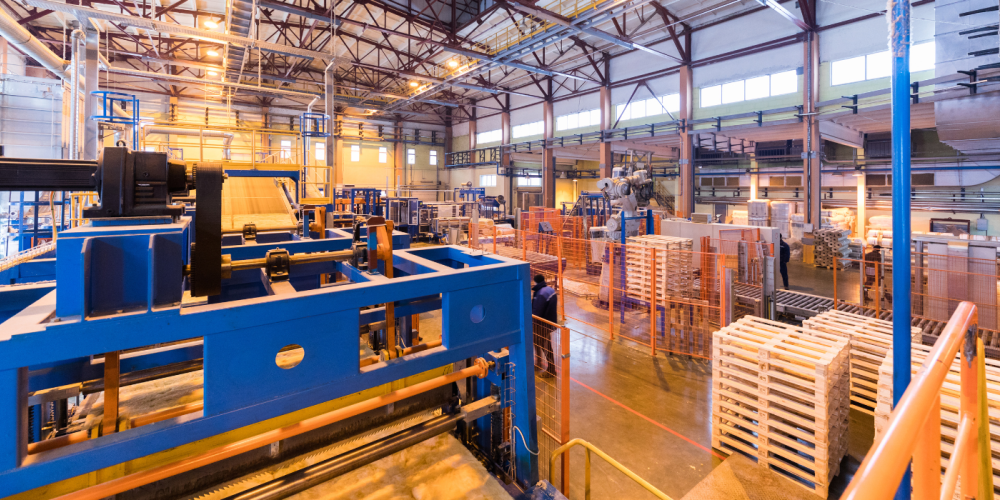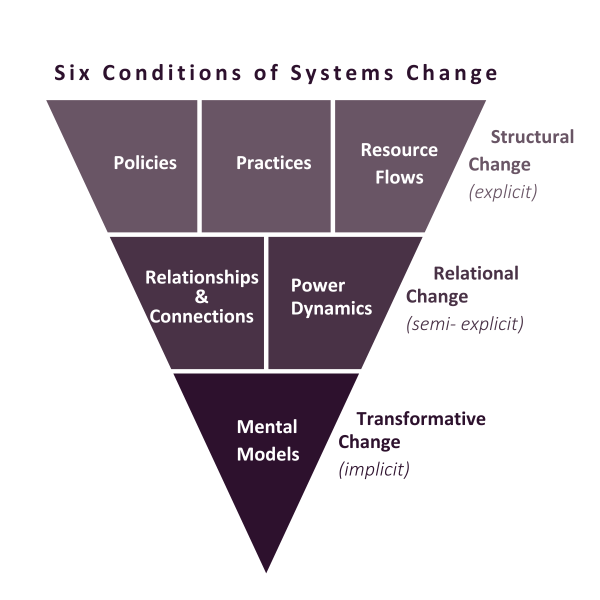Unlocking transformation
The potential of Offsite Manufacturing and Systems Change

If it's not a system, it's not a solution.
Gerry McCaughey
During a recent discussion with Scott Fisher, CEO of Offsite NZ Incorporated and an experienced voice in the construction industry, his insights illuminated the untapped potential of the offsite sector.
Focusing on enhancing workforce well-being, Scott emphasised the crucial role that the offsite sector plays in promoting both physical and mental health among workers. The environment in which work takes place carries lasting health implications for the well-being of its workforce. Scott asserts that the provision of a secure, dry, warm, and efficiently organised workspace, coupled with the incorporation of advanced technology and streamlined processes, forms the foundation for ensuring the safety and well-being of workers.
Scott's perspective extends beyond the immediate benefits for individual workers. He underscores the ripple effect that a superior work environment can create, positively influencing overall productivity while championing environmental preservation. By adopting offsite construction practices, waste reduction becomes a tangible outcome, contributing to a greener planet. Furthermore, the potential for improved quality and reduced rework amplifies the advantages of this approach.
In essence, Scott's perspective encapsulates the dual advantages of the offsite sector: a sanctuary for the workforce's physical and mental health, combined with a catalyst for elevated productivity and sustainable practices. His insights pave the way for a paradigm shift in how we view construction, emphasising not only the structures erected but also the well-being and ecological footprint left in their wake.
According to Gerry McCaughey, a visionary in the field, Offsite Manufacturing (OSM) isn't just about making building blocks; it's about creating a whole new way of building. True OSM companies do more than produce parts – they're like architects of significant change. While components are important, they're just pieces of the bigger system in OSM. In a world where we're seeking better ways to do things, OSM, as highlighted by Gerry McCaughey, shines as an example of this idea. It's telling industries that unless they examine the bigger picture and change their approach, they won't find real solutions. This is what OSM is all about – it's a call to change how we build things, moving beyond just parts and embracing a whole new construction method.
Characterising the Prefabrication Workforce
In our pursuit of progress and innovation, it's imperative to recognise that complex challenges, like those faced by the construction industry, cannot be solved in isolation. Embracing a systems change approach is crucial to understanding and addressing the deeper, interconnected root causes that shape our industry. Our recently completed research on OSM, titled 'Characterising the Prefabrication Workforce,' presents a unique opportunity to harness this approach and drive transformative change in the construction sector.
Understanding the Six Conditions of Systems Change
At ConCOVE, we understand the importance of the Six Conditions of Systems Change and how they interact to reshape industries like OSM. These conditions—policies, practices, resource flows, relationships and connections, power dynamics, and mental models—serve as a roadmap for disrupting the status quo and fostering lasting change.
Policy, Practice, and Resource Flows (Structural Change)
Our OSM research uncovered critical insights into the structural aspects of the construction industry.
Policy Change
The government has responded to the market need by committing to increase the use of OSM by at least 10% annually. This commitment represents a policy change aimed at promoting the adoption of OSM in the construction industry.
Practice Change
The report highlights the growth of OSM and how it reimagines construction practices. The adoption of prefabrication methods and the integration of new technologies into construction processes represent practice changes that can lead to greater efficiency and sustainability. OSM offers practice solutions to productivity, safety, waste, quality, speed, and labour shortages.
Resource Flows
The interactive dashboard developed in collaboration with Scarlatti and integrated into Waihanga Ara Rau's Workforce Information Platform (WIP) serves as a resource flow that provides valuable information to the Vocational Educational Training (VET) and the construction and infrastructure industry stakeholders. This resource enhances decision-making by providing data-driven insights into the prefabrication workforce.
Aside from the benefits outlined under 'practice', offsite construction is one of the most cost-effective build options available in today’s market. This is thanks to a combination of offsite processes producing less waste; producing materials faster and with fewer mistakes, as well as requiring lower-skilled labour costs.
Policies, practices, and resource flows sit at the forefront of structural transformation, shaping how the industry operates and evolves.
Relationships and Connections, Power Dynamics (Relational Change)
Digging deeper, we find that relationships and power dynamics are essential dimensions that underpin the evolution of the construction sector.
Stakeholder Engagement
The report encourages participation from stakeholders, particularly from prefabrication businesses in New Zealand. This engagement creates relationships and connections between us and industry professionals, fostering collaboration in data collection and analysis. It also allows for better integration to meet the needs of VET, construction and infrastructure when thinking and planning workforce development.
Influence of Stakeholders
The government's commitment to boosting OSM usage reflects a shift in power dynamics as policy decisions are influenced by stakeholder interests and market studies.
Collaborative Efforts
The call for collaboration and feedback through the interactive dashboard promotes a relational change by involving industry players in shaping the future of the prefabrication workforce.
Our research highlights the labour-intensive nature of the prefabrication workforce. However, we anticipate a paradigm shift as technology-intensive roles become more relevant. Recognising and addressing power dynamics and fostering meaningful connections will play a pivotal role in shaping the future of OSM.
Mental Models (Transformative Change)
Central to our systems change approach is the concept of transformative change—shifting mental models and deeply ingrained beliefs.
Shift in Mindset
The report challenges the traditional mindset of construction by introducing OSM as a new paradigm. The projected shift in the composition of the prefabrication workforce due to technology adoption indicates a transformation in mental models regarding construction practices.
Embracing Technology
The recommendations to embrace technology and embed digital skills in vocational education stress a transformative change in how the industry perceives and integrates technology.
Our OSM research highlights the potential for significant behavioural and outcome changes by embracing technology and fostering digital literacy. By challenging conventional thinking, we pave the way for innovation and progress that transcends traditional boundaries.
Perhaps the overarching prevailing mental model that will adversely impact the progress and development of OSM in New Zealand, also contributing to our slowness in adopting technology in the sector, is what Gerry McCaughey refers to as the 7 most expensive words in business today: ‘We have always done it that way.’
Translating research into action
Our OSM research report is more than just data and graphs; it's a call to action for industry-wide transformation. By adopting a systems change lens, we offer tangible steps to catalyse change:
Embrace technology
Leverage technology to meet workforce demands and enhance productivity. Address skill gaps and ensure that digital literacy becomes an integral part of vocational education.
Education for the future
As the OSM workforce evolves, equipping individuals with digital skills becomes paramount. Promote the integration of generic digital skills into vocational education programs to empower the next generation of OSM professionals.
Continuing the dialogue
Our research opens doors for further exploration. Delve into the implications of widespread technology adoption and future skills requirements. Collaborate with key industry players to ensure alignment and effective execution.
Now that we have summarised the report and highlighted the benefits of OSM using the six conditions to stimulate systems change, the question now becomes - why wouldn't we adopt OSM?
An opportune moment for transformation: Balancing alignment and improvement
Through a comprehensive analysis of the six conditions, it is evident that the construction industry stands at a crucial crossroads, ready to embrace OSM as a transformative shift. The alignment observed across these conditions signals a strategic window to embark on this journey of change, reshaping the construction landscape. The alignment observed isn't coincidental; it underscores a compelling case for transition.
Recent policy shifts have laid the groundwork for new construction practices and directed resource flows toward OSM. Collaborative efforts have fostered unity among stakeholders, creating a solid basis for transformation. The growing acceptance of technology signifies a changing mindset within the industry, one that welcomes innovative methodologies. However, in the pursuit of transformation, it's crucial to acknowledge that the path forward is as vital as the current momentum. The alignment that indicates preparedness also highlights areas that warrant continued refinement.
Policy, Practice, and Resource Flows – ‘Guiding progress’
While policy changes have initiated change, ongoing evaluation and adjustment are vital for sustained success. Monitoring and adapting policies in response to industry dynamics will optimise the impact of OSM. This adaptive approach ensures that policies evolve in sync with industry shifts, preventing stagnation and maximising the benefits of OSM adoption.
Relationships and Connections, and Power Dynamics – ‘Nurturing collaboration’
Collaboration is pivotal, yet its significance extends beyond initial efforts. Continuously nurturing relationships and establishing balanced power dynamics are fundamental for transformation to take root. Facilitating ongoing dialogue platforms and proactive conflict resolution will strengthen relationships and mitigate potential disruptions, securing the success of the OSM journey.
Mental Models – ‘Shifting perspectives’
The shift in mental models is underway, but it requires persistent effort to gain traction. Overcoming resistance and entrenched mindsets necessitates a deliberate focus on raising awareness. Actively showcasing the advantages and potential of OSM will expedite the shift in mental models, simplifying the adoption process and ensuring smoother integration. In essence, the alignment across the six conditions propels the construction industry toward a transformative future anchored in OSM. This juncture isn't just a glimpse of opportunity—it's a call to action.
It invites us to embrace OSM as a catalyst for holistic evolution within construction. However, let's not be complacent. As we step into this new phase, remember that excellence demands an unwavering commitment to improvement. The alignment is our foundation; the refinement is our guide. Together, they navigate us toward an OSM-infused future marked by efficiency, sustainability, and innovation. The moment for transformation has arrived, and the roadmap is clear: align, refine, and thrive.
Conclusion
In conclusion, the insights gleaned from Scott Fisher, CEO of Offsite NZ Incorporated, and the research on OSM highlight the significant potential of this transformative approach to construction. OSM not only addresses immediate workforce challenges and operational efficiencies but also offers a visionary path towards sustainable and innovative construction practices.
The construction industry finds itself at a critical crossroads, primed to embrace OSM as a catalyst for comprehensive change. The alignment of critical elements, including policy adaptations, innovative methodologies, optimised resource allocation, collaborative partnerships, shifting power dynamics, and evolving mindsets, creates a strategic opportunity.
This convergence is a clear signal to embark on a journey that redefines the construction landscape.
However, while alignment sets the stage, ongoing refinement is equally imperative. Industry adaptability and responsiveness remain paramount, ensuring that policies remain dynamic, relationships are nurtured, and entrenched mental models are consistently challenged. This commitment to continuous improvement will serve as the guiding force for the transformative trajectory of OSM integration.
In a world where change is both inevitable and indispensable, OSM stands as a paradigm for how adopting a systems change approach can unlock an entire industry's potential. The roadmap is evident: align with OSM principles, refine practices to suit evolving demands, and collectively thrive in an era defined by efficiency, sustainability, and innovation. As we stand on the brink of this transformation, let us heed the call to action, ushering in an era of construction that not only erects structures but also constructs a more promising and forward-looking world.
For a comprehensive understanding of our findings and insights, we invite you to explore the full report, "Characterising the Prefabrication Workforce," available for reading here. Your engagement with this research will contribute to the ongoing dialogue and collaborative efforts that are shaping the future of OSM and its impact on the construction sector.